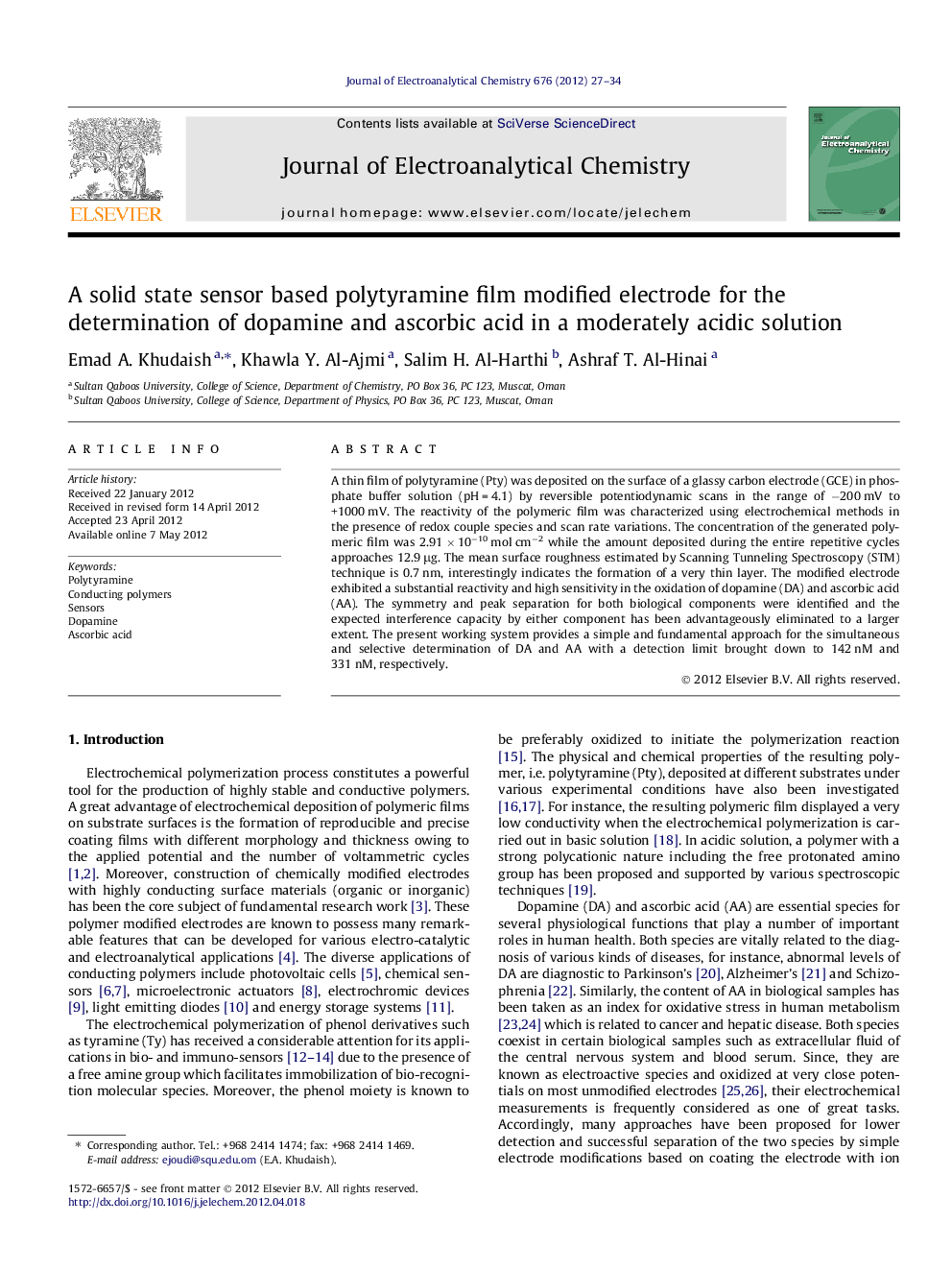| Article ID | Journal | Published Year | Pages | File Type |
|---|---|---|---|---|
| 219311 | Journal of Electroanalytical Chemistry | 2012 | 8 Pages |
A thin film of polytyramine (Pty) was deposited on the surface of a glassy carbon electrode (GCE) in phosphate buffer solution (pH = 4.1) by reversible potentiodynamic scans in the range of −200 mV to +1000 mV. The reactivity of the polymeric film was characterized using electrochemical methods in the presence of redox couple species and scan rate variations. The concentration of the generated polymeric film was 2.91 × 10−10 mol cm−2 while the amount deposited during the entire repetitive cycles approaches 12.9 μg. The mean surface roughness estimated by Scanning Tunneling Spectroscopy (STM) technique is 0.7 nm, interestingly indicates the formation of a very thin layer. The modified electrode exhibited a substantial reactivity and high sensitivity in the oxidation of dopamine (DA) and ascorbic acid (AA). The symmetry and peak separation for both biological components were identified and the expected interference capacity by either component has been advantageously eliminated to a larger extent. The present working system provides a simple and fundamental approach for the simultaneous and selective determination of DA and AA with a detection limit brought down to 142 nM and 331 nM, respectively.
► Electrode construction is achieved by controlling the potentiodynamic cycles and the electrolyte composition. ► It produces a porous film possessing active redox sites that accelerates the electron transfer reaction. ► It enhances the oxidation of DA over that of AA. ► It improves the peak to peak separation and the limit of detection of both species. ► It diminishes the electrode fouling and be applicable for real samples.
